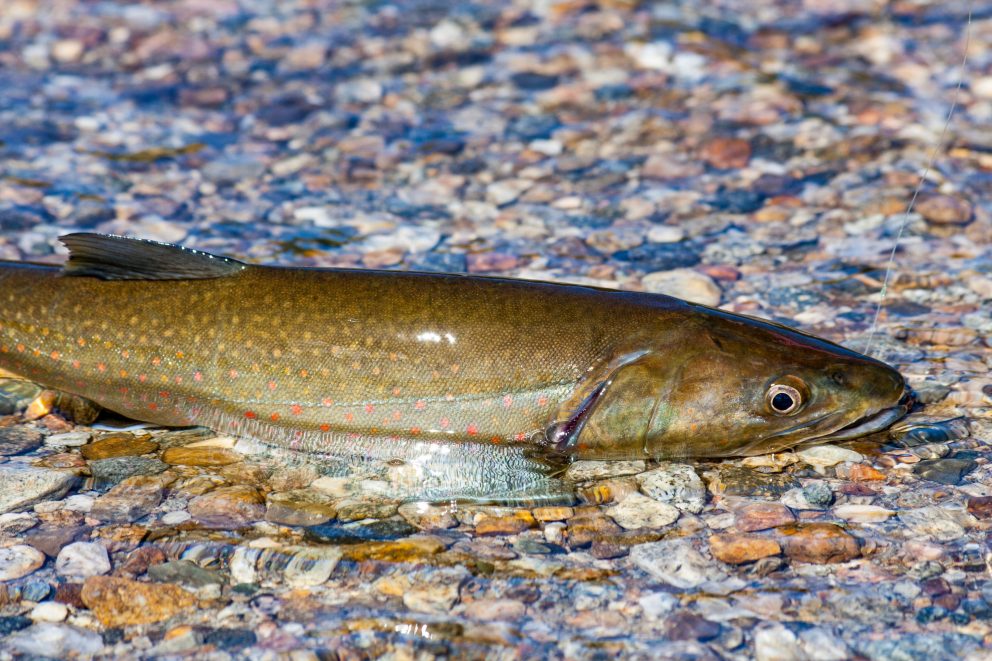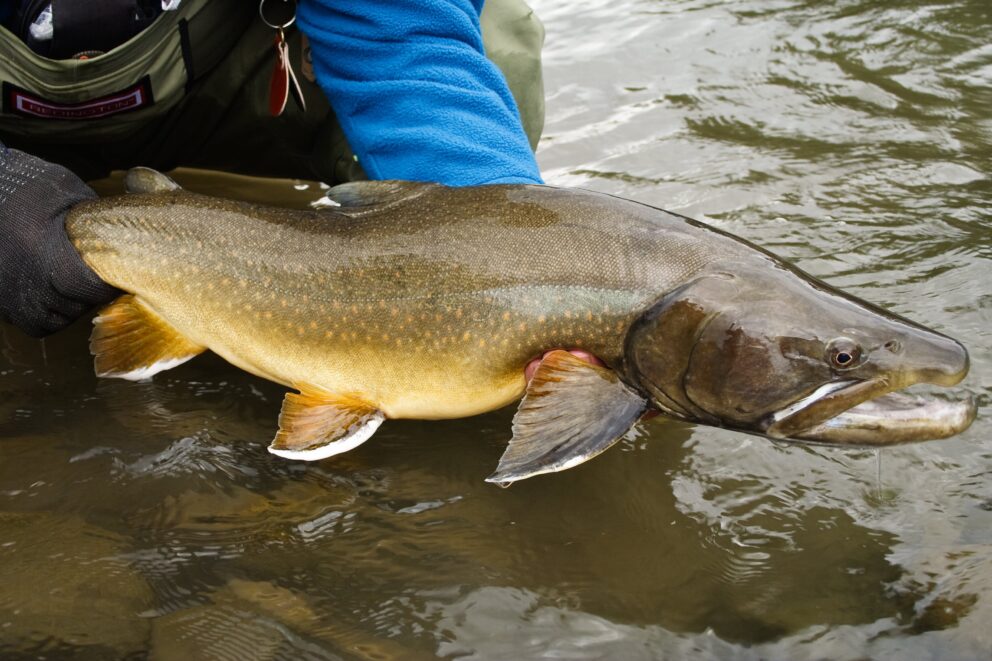- SCIENTIFIC NAME
- Salvelinus confluentus
- CLASSIFICATION
- Fish
- LIFE SPAN
- 5-7 Years
- SIZE
- 10-22” | 1-5lbs
- STATE CONSERVATION STATUS
-
- Priority Species
- Threatened
- FEDERAL CONSERVATION STATUS
- Vulnerable
- GAME STATUS
- Game
- Washoe
- Humboldt
- Pershing
- Churchill
- Mineral
- Lyon
- Douglas
- Carson City
- Storey
- Elko
- Lander
- Eureka
- White Pine
- Esmeralda
- Nye
- Lincoln
- Clark
Habitat & Range
Bull Trout are native throughout the Pacific Northwest. In Nevada, the Bull Trout is native to the Jarbidge River system (East and West Forks) and their associated tributaries in northern Elko county and represents the southernmost population of the species rangewide. The Bull Trout’s range extends north into Idaho, Montana, Oregon, Washington, British Columbia, and Alberta. It is also found in the southern areas of the Northwest Territories and Yukon. Of all the native salmonids of the United States, bull trout generally have the most specific habitat requirements, which are often referred to as “the four Cs”: Cold, Clean, Complex, and Connected habitat.
Threats
- Climate Variables
- Habitat Disturbance
- Larger Fish
- Predation
- Small range
Natural History
You’ll find the Bull Trout in pristine streams and lakes in western North America where they feed on terrestrial and aquatic insects, as well as smaller fish. One of the more sensitive species, the Bull Trout has some of the most specific habitat requirements of any in the salmonid family. Water temperatures between 48-58 degrees Fahrenheit is preferred and anything warmer will limit the Bull Trout’s distribution. Additionally, they require clean stream substrates for spawning, complex habitats with deep pools undercut banks, and lots of large instream logs or wood for shelter.
Fun Facts














